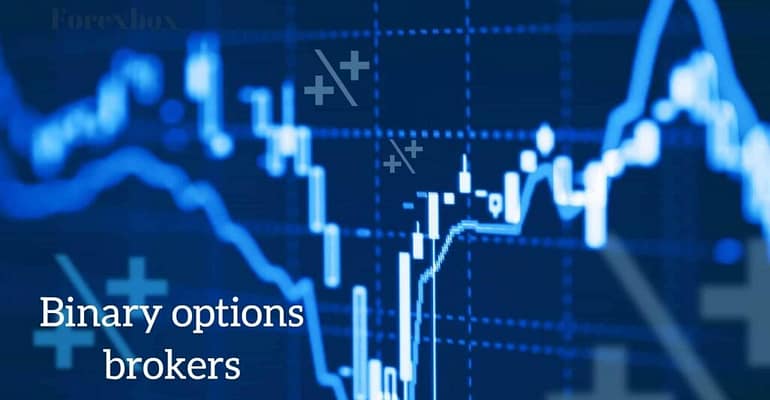Contents
This is the essential condition for the amplifier to acts as the feedback. To summarize the condition, we can say that an amplifier which uses positive feedback and which possess infinite overall gain is termed as the oscillator circuit. The principle of fxcm reviews the oscillator is that when the feedback factor or the loop gain is one, then the overall gain of the oscillator circuit will be infinite. Due to the magnetic fields around inductor, the energy is stored in the inductor in the form of magnetic field.
While silicon oscillators usually have a relatively poor frequency error of about 1-2%, they are compact and require only an external power supply bypass capacitor. They can be a low-cost alternative to other types of oscillators in non-precision applications. As mentioned at the start of the article, many devices have oscillators integrated into their silicon.
The most obvious oscillator application is a clock source in digital systems. Transducer circuitry, carrier-based amplifiers, sine wave formation, filters, interval Foreign Currency Exchange generators, and data converters all utilize different forms of oscillators. Commonly employed oscillators are resonant element based or resistor–capacitor types.
Therefore, to create a 180-degree phase shift, oscillators require at least two RC networks. However, it is challenging to achieve precisely 90 degrees of phase shift with each RC network stage. We need to use more RC network stages cascaded together to produce the required value and the desired oscillation frequency. We can use the fact that a phase shift occurs between the input to an RC network, and the output from the same network, by using interconnected RC elements in the feedback branch. In the picture above, we can see that each cascaded RC network provides a 60 degree out phase voltage lag. It’s worth noting for the table below that each option has a vast variety of different devices available on the market.
- The initial purpose of an Oscillator is to generate a given waveform of a constant peak amplitude and specific frequency and to maintain this waveform within certain limits of amplitude and frequency.
- MEMS oscillators often include phase-locked loops that produce selectable or programmable output frequencies.
- However, a capacitor has current leakage, and inductors have resistance.
- The primary function of the active components is to add the necessary gain, help generate positive feedback, and to compensate for the loss of energy.
- Suppose, we provide only the output of the feedback circuit at the input of the amplifier and remove the originally applied input signal.
These are ubiquitous in modern communications circuits, used in filters, modulators, demodulators, and forming the basis of frequency synthesizer circuits which are used to tune radios and televisions. A nonlinear or relaxation oscillator produces a non-sinusoidal output, such as a square, sawtooth or triangle wave. It consists of an energy-storing element and a nonlinear switching device (a latch, Schmitt best way to learn forex trigger, or negative-resistance element) connected in a feedback loop. The switching device periodically charges and discharges the energy stored in the storage element thus causing abrupt changes in the output waveform. The Quartz oscillator is the most common type of crystal oscillator on the market. Where accuracy and stability are critical, the primary choice is crystal oscillators and their variants.
What is an Oscillator? Types and Function of Oscillator
The pendulum swings back and forth in a controlled, constant motion, hitting two distinct points. The far edge of a swing represents when the pendulum has the most amount of potential energy to be expended when freed. When the pendulum is in the exact middle of its swing, it has the most amount of kinetic energy, or energy currently being used for motion. However, the free swing of a pendulum does not translate into a constant motion because on each swing of the pendulum, a small amount of energy is lost at the potential energy phase.
As a result of induced emf the charge will flow and as a consequence of this induced emf, the charge will be stored in the capacitor. The capacitor will store the energy in the form of the electrostatic field. The capacitor is already charged and connected to an inductor with the switch between them. Tank circuit – This circuit is also known as L-C circuit and consists of an inductor of inductance L and a capacitor of capacitance C. The current voltage characteristics of the transistor used in an oscillator has linear region and non linear region. Sinusoidal oscillators operate in the linear region and relaxation oscillators operate in non linear regions of the characteristics.
Radio Frequency Spectrum Management and Time and Frequency Standards
Supply voltage applied to the active device, shift the oscillator frequency. As we know that we have employed a positive feedback circuit over here. The reason for this is that feedback provides a part of the output to the oscillatory circuit in the correct phase so as to have sustained oscillations.

A crystal oscillator stability is measured in ppm , and stability could be somewhere around 0.01% to 0.0001% over -20 to +70 Celsius, depending on the specific device. An RC oscillator’s stability can at best be 0.1% and LC 0.01%, they are more typically around 2% and are very sensitive to temperature changes. A quartz crystal can oscillate with very little power required to keep it activated compared to many other oscillators, making them perfect for low power applications. In some types the negative resistance device is connected in parallel with the resonant circuit.
It is to be noted here that, initially, the loop gain is always more than 1 in order to build up the oscillations. But, once a certain voltage is reached by the signal then the loop gain now becomes 1. Now, when the output of the feedback circuit is provided to the amplifier along with the input.
Mechanics of an Oscillator
When looking at fixed frequency MEMS oscillators, for example, options that are regularly stocked at DigiKey vary between 150 parts per million to 50 parts per billion in terms of frequency stability. The first practical oscillators were based on electric arcs, which were used for lighting in the 19th century. Ernst Lecher in 1888 showed that the current CMC Markets Overview through an electric arc could be oscillatory. Feedback Circuit − The function of feedback circuit is to transfer a part of the output energy to LC circuit in proper phase. This feedback is positive in oscillators while negative in amplifiers. A Practical Oscillator circuit consists of a tank circuit, a transistor amplifier, and a feedback circuit.
He has authored books on technical analysis and foreign exchange trading published by John Wiley and Sons and served as a guest expert on CNBC, BloombergTV, Forbes, and Reuters among other financial media. Eventually, any physical oscillator stops moving because of friction. To keep it going, you have to add a little bit of energy on each cycle. In a pendulum clock, the energy that keeps the pendulum moving comes from the spring. The pendulum gets a little push on each stroke to make up for the energy it loses to friction. To understand how electronic oscillators work, it is helpful to look at examples from the physical world.
Analysts find oscillators most advantageous when they cannot find a clear trend in a company’s stock price easily, for example when a stock trades horizontally or sideways. The most common oscillators are the stochastic oscillator, relative strength , rate of change , and money flow . A change in the output load may cause a change in the Q-factor of the tank circuit, hereby causing a change in oscillator output frequency. The frequency stability of an oscillator is a measure of its ability to maintain a constant frequency, over a long time interval.
Non-sinusoidal or Relaxation Oscillators
There will be very few components that can qualify for this category. One type of harmonic oscillator is the quantum harmonic oscillator, which incorporates principles of quantum mechanics to power the charge. The charge is controlled by atomic molecules that can maintain a virtually endless sinusoidal wave of power. Higher end items like quantum watches are controlled by quantum harmonic oscillators because of their precision. Transistor Amplifier − The output of the tank circuit is connected to the amplifier circuit so that the oscillations produced by the tank circuit are amplified here.
Advantages of Oscillator Circuit
A device used to produce sinusoidal or non sinusoidal ( e.g. square wave ) wave forms without the application of an external input signal is known as an oscillator. Thus, the oscillator converts D.C power into A.C power of desired frequency. Feedback is the process of transferring energy from a high-level point in a system to a low-level point. This means transferring energy from the output of an amplifier back to its input. If the output feedback signal opposes the input signal, the signal is degenerative or negative feedback However, if the feedback aids the input signal, the feedback is regenerative or positive feedbacks. Regenerative or positive feedback is one of the requirements to sustain oscillations in an Oscillator.
Moving average convergence/divergence is a momentum indicator that shows the relationship between two moving averages of a security’s price. If an investor uses an oscillator, they first pick two values; then, placing the tool between the two, the oscillator oscillates, creating a trend indicator. Investors then use the trend indicator to read current market conditions for that particular asset. When the investor sees that the oscillator moves toward the higher value, the investor reads the asset as overbought.
In a crystal oscillator circuit the filter is a piezoelectric crystal . The crystal mechanically vibrates as a resonator, and its frequency of vibration determines the oscillation frequency. Crystals have a very high Q-factor and also better temperature stability than tuned circuits, so crystal oscillators have much better frequency stability than LC or RC oscillators. Crystal oscillators are the most common type of linear oscillator, used to stabilize the frequency of most radio transmitters, and to generate the clock signal in computers and quartz clocks. Crystal oscillators often use the same circuits as LC oscillators, with the crystal replacing the tuned circuit; the Pierce oscillator circuit is also commonly used. Quartz crystals are generally limited to frequencies of 30 MHz or below.


